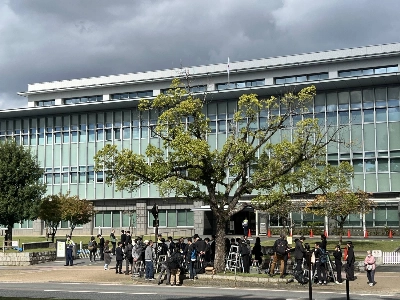What is shindo? Japan's unique metric for seismic intensity
The Japan Meteorological Agency has a unique seismic scale called shindo that measures the degree of shaking in the event of an earthquake. This set of numbers — ranging from 0 to 7 — is different from an earthquake’s magnitude, which is a numerical value reflecting the size or energy of the temblor at its source. The shaking and effects become greater as the number increases, with shindo 5 and 6 further divided into lower and upper levels.
At maximum 7, people cannot stay standing and may be thrown into the air, while unsecured pieces of furniture are likely to topple over or be tossed up in the air and reinforced concrete walls may collapse.
At the seismic intensity of upper 5, people find it difficult to move and dishes could fall out from cupboards. Lower five may cause hanging objects to swing violently.
The agency defines level 4 as being felt by most people even if they are walking and likely to awake people who are sleeping. It causes hanging objects to swing significantly. Level 3 can be felt by most people who are staying still and likely to make plates in cupboards rattle.
Many people who are not moving around can feel shindo 2 quakes, which will make hanging objects swing slightly, while only some people staying put may feel slight movement in level 1. Zero intensity is detected by seismometers but not perceptible to people.
The Great East Japan Earthquake on March 11, 2011, which spawned the giant tsunami that triggered the Fukushima nuclear disaster, was felt nearly nationwide. The shindo readings ranged from 7 in part of Miyagi Prefecture and upper 5 in parts of Tokyo to a barely perceptible 1 in Kyushu. There have been only five occasions when a level 7 was recorded, data from the Meteorological Agency going back to 1923 shows: the Kobe quake in 1995; the 2004 Chuetsu earthquake that killed 46 and derailed a bullet train; the Kumamoto quake in 2016; the March 2011 quake; and the 2018 quake that struck Hokkaido.
Until 1996, shindo was mostly measured by the agency’s staff stationed around the country, who for more than a century reported how strong they felt the shaking and then surveyed the extent of the damage left behind, according to documentation on the agency’s website. Now a network of seismographs spans the country, measuring the initial P-waves when an earthquake strikes. Agency computers collate the data and almost instantaneously issue estimates of its size and likely location. This network is crucial to informing Japan’s early-warning alert system.
When an earthquake of a certain size is detected, warnings are issued to iPhones, TV screens and factory lines. Trains automatically halt, and people are given time to prepare before the more damaging S-waves strike.
(Information added from Bloomberg)















